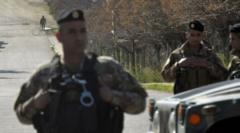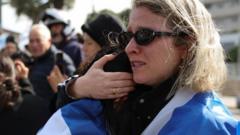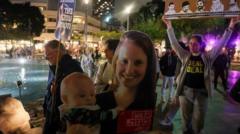The article reveals that while Israeli forces have diminished their presence in southern Lebanon, they continue to occupy five strategic positions, citing security reasons. Lebanese officials demand a complete withdrawal, emphasizing territorial sovereignty amidst the aftermath of a devastating conflict with Hezbollah.
Israeli Forces Maintain Presence in Southern Lebanon Post-Withdrawal Deadline

Israeli Forces Maintain Presence in Southern Lebanon Post-Withdrawal Deadline
After a year-long conflict, Israeli military positions remain in southern Lebanon, leading to tensions with Lebanese authorities.
Following the cessation of hostilities between Israel and Hezbollah, Israeli forces have pulled back from several positions in southern Lebanon, leaving behind five key military sites as per the latest reports from Lebanon’s state news agency. This gradual withdrawal stems from a ceasefire agreement aimed at curtailing a year-long conflict that has significantly impacted both nations.
Israeli officials justify the continued presence, asserting the necessity of these sites for the security of northern Israeli communities. Israel's Foreign Minister, Israel Katz, stated that the Israel Defense Forces (IDF) will remain at these high points temporarily, with plans for a full withdrawal contingent on Lebanon's execution of its commitments under the ceasefire terms.
In contrast, Lebanese authorities view the remaining Israeli troops as an occupation, arguing that any Israeli military presence on Lebanese soil contravenes national sovereignty. They insist on a complete withdrawal, alongside the deployment of the Lebanese army to establish control in areas previously dominated by Hezbollah. This militant group, which has been significantly weakened in the conflict, was responsible for launching military operations against Israel, claiming to support Palestinian causes.
The conflict has led to severe casualties and displacement on both sides. Reports identify over 3,960 fatalities, predominantly civilians in Lebanon, and approximately 60,000 displaced individuals in northern Israel; meanwhile, many Lebanese, such as villager Atef Arabi, are determined to return home despite the destruction.
In recent developments, Lebanese forces have begun clearing areas once occupied by Israeli troops, facilitating the return of displaced residents. However, Israeli officials have reiterated their stance on the IDF's operational readiness against potential threats, aiming to prevent a recurrence of violence after previous escalations in October 2023.
As Israeli and Lebanese authorities navigate this complex situation, the implications of military presence and territorial control will remain central to discussions regarding regional stability and security.




















